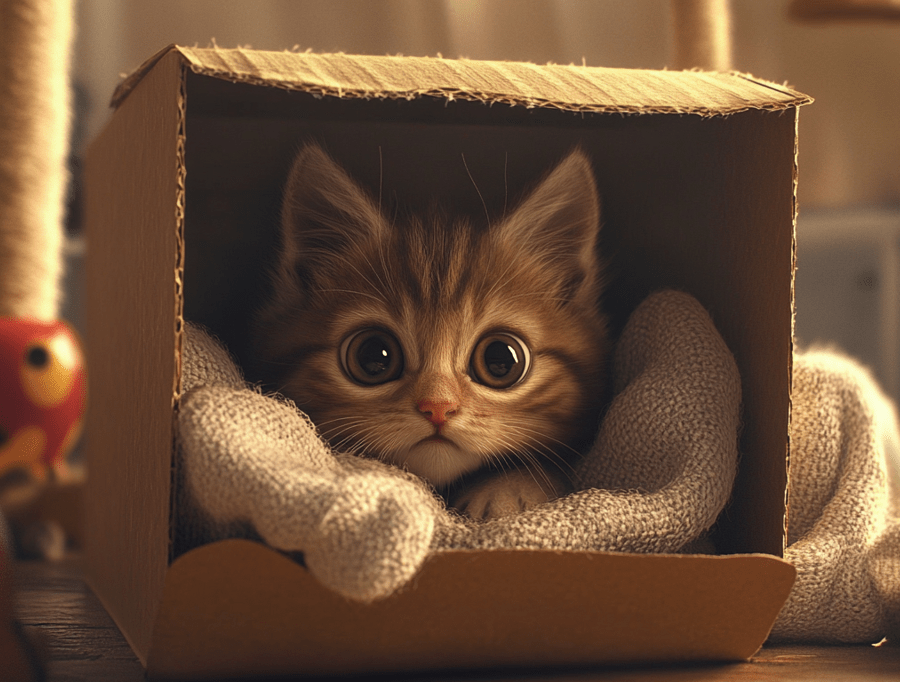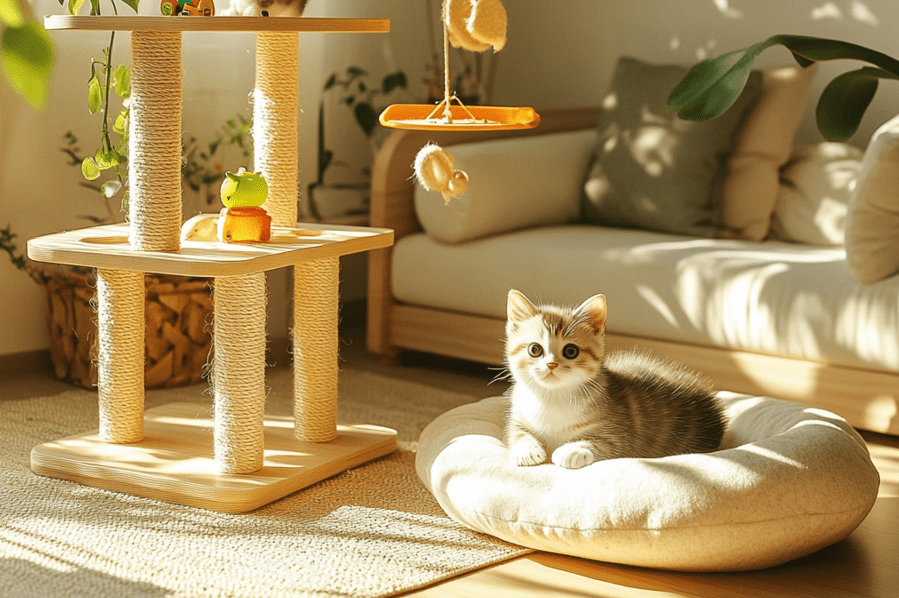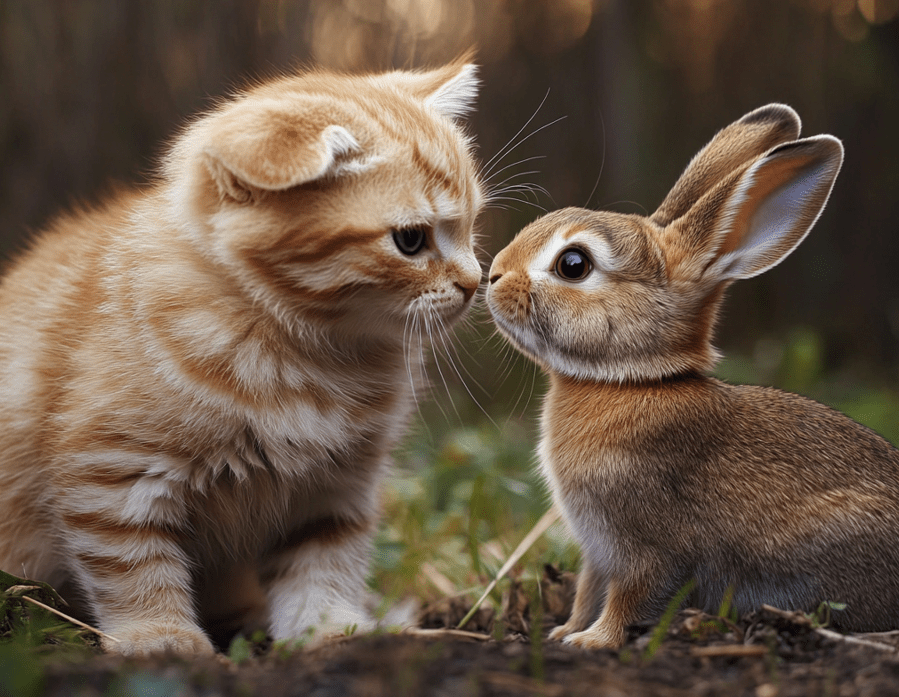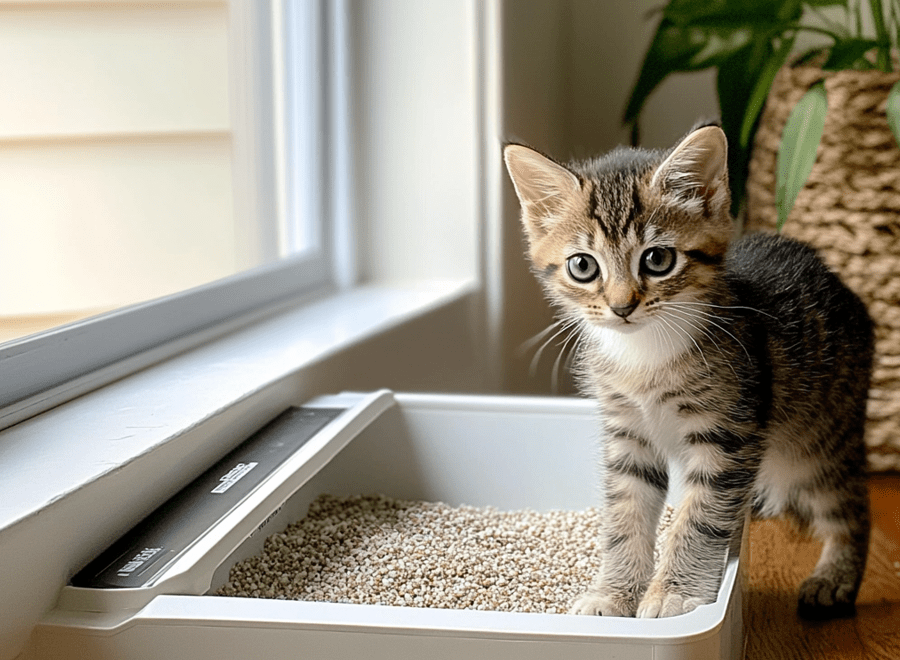
Potty training a kitten is an easy task for cat owners. Every kitten has a natural instinct to use the litter box. This natural instinct makes them easier to litter train. Because of this cat owners can easily train the kitten without any hassle.
For kittens that need to be potty trained indoors, proper litter training is very important. Most kittens instinctively learn how to cover their waste. For this reason they naturally seek loose materials such as dirt or clumping litter. Young kittens are always trying to find the best place to clean themselves. They watch their mother use the litter box and learn by following her.
However, a little guidance can go a long way when it comes to litter training a kitten. Placing the litter box in a convenient place, providing the right litter supplies, using natural litter and cleaning the litter box at regular intervals is very much important in litter training for kittens. It is also very important to keep track where the litter box is. Keep it in the same place. This will help the kitten understand where to consistently go to potty.
We consulted several cat experts on how to litter train a kitten. Read our tips on how to easily and successfully litter train your kitten. Let’s move on-
When To Start Litter Training Kittens

In the first couple of weeks after a kitten is born, their mom does all kinds of things to help her babies go potty and cleans them up afterwards. At this point, that is provided by the mother cat and there are no litter boxes required. But kittens don’t remain as helpless forever, and soon you have to get them started on their next big adventure-using the litter box.
Shoot for 4 weeks of age as an intro time to a litter box. It is also the same age at which kittens begin to wean transitioning from their mother’s milk bar-like nipples, and scratching them with needle sharp claws. One key is providing a basic, kitten-friendly litter box to make jumping in and out as simple as possible. Select a litter that is child-friendly, ideally non-clumping as clumps will quickly become lodged somewhere if it needs to be consumed.
You will need to be patient as they learn, but kittens have an instinctive desire to bury their waste so with a little pointing in the right direction and some encouragement, most pick up litter training quickly. After your baby eats or wakes, put them in the litter box if they are standing.
How to litter train a kitten
1.Choose the right litter box
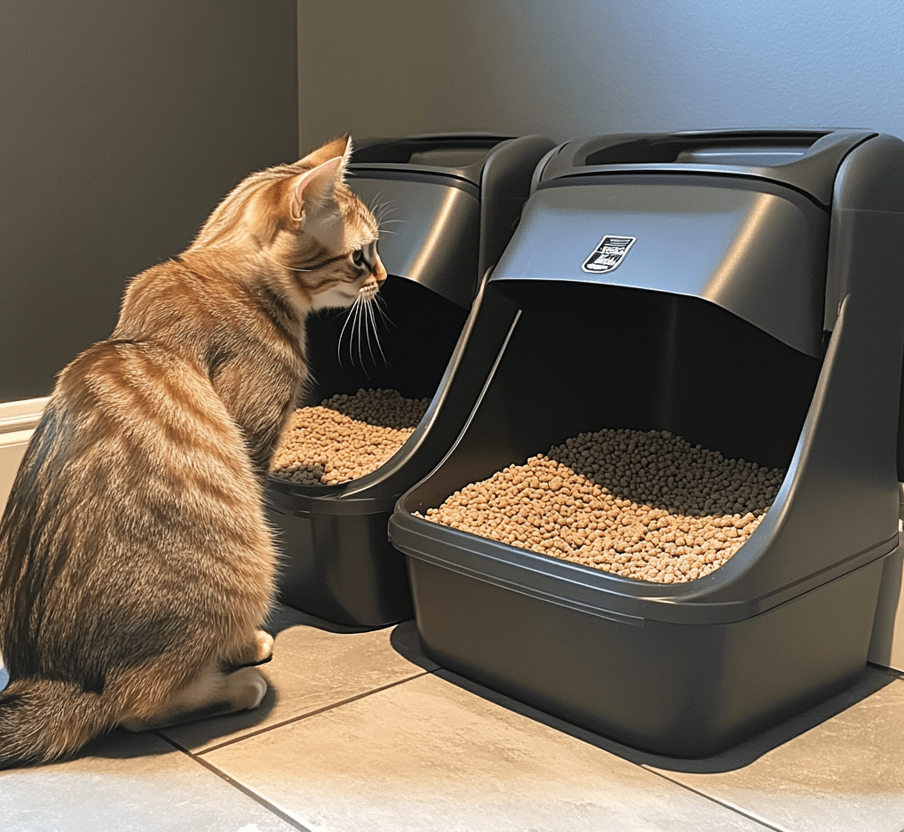
Choosing a litter box may seem very simple, but it can make a difference for your kitten. Small kittens can be overwhelmed with very large boxes. My colleague, a feline behavior expert, recommends using a litter box that is about 13 by 9 inches height in size for kittens. Multiple cats need one more box than the number of cats. That means, for two cats you need three boxes and if there are three of them then four boxes should be used.
Covered vs. open litter boxes
Generally, most cats will use open litter boxes. Cat behavior consultants say cats never choose enclosed areas in nature to use the bathroom and get away from predators; a covered box may make them feel trapped. Although some cats may prefer covered boxes, you do want to provide both options and see what your cat does respond best to.
2.Choose the best litter type
According to studies, most cats prefer fine-grain litter as it is softer on their paws. Non-clumping litter is messier, but your cat may have a different opinion. Try different types of litter and then use the one your cat likes.
3.Select the right place for litter boxes
Correct litter box placement is the most important factor for litter training. Here are some tips:
Spaces apart: Litter boxes should be spread out in different places. If all the boxes are in one place it will look like one big box. That will create a problem for multi cat homes.
Keep them visible: Avoid putting the litter box in the corner. Cats are most comfortable when they can hide and not feel rushed or cornered while doing their business.
Provide light: Although the cats can see well at night, it is better if their litter boxes are not completely dark. Add a night-light if needed.
Minimize destruction: Keep the area around the litter box free of things that could distract your kitten.
Use a box on every floor: If you have multiple floors, place one litter box on each floor. Remove obstacles from the cat’s path to the litter box. Make sure that the litter boxes are easily accessible for kittens.
4.Introduce your kitten to litter box
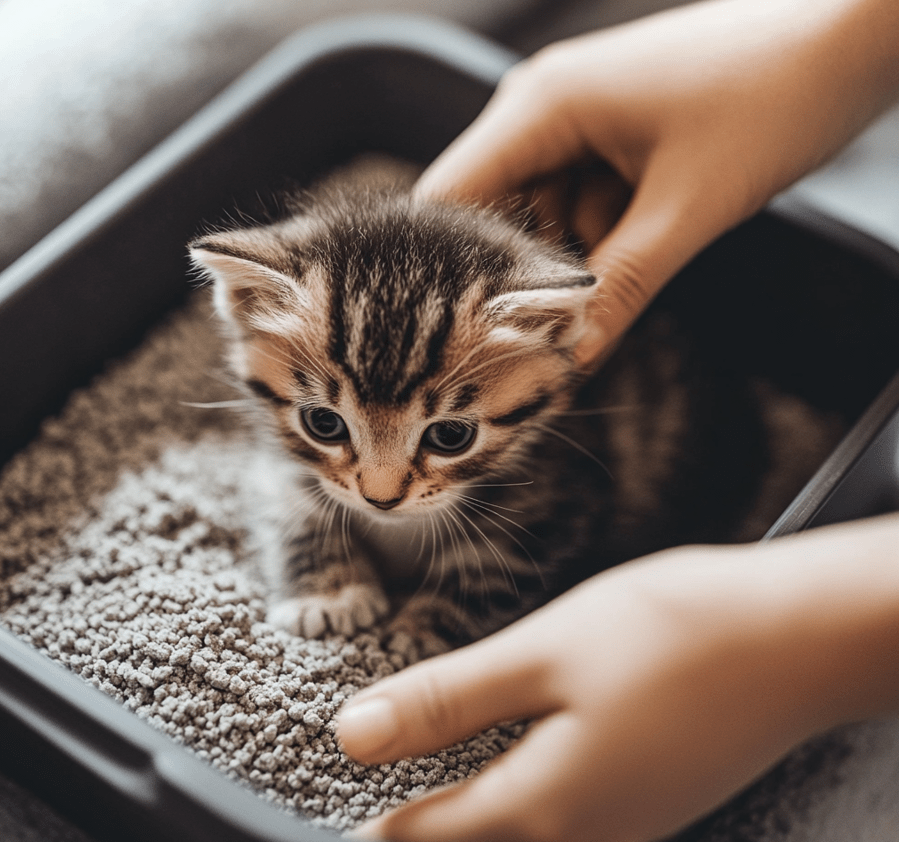
When the litter boxes are fully set up, show them to your kitten and let them smell it. Then place them gently there. They will instinctively start using it. If they don’t do it out of instinct, they should be placed next to the litter box after eating or waking up. Then gradually they will learn to use it themselves.
5.Promote proper litter box habits
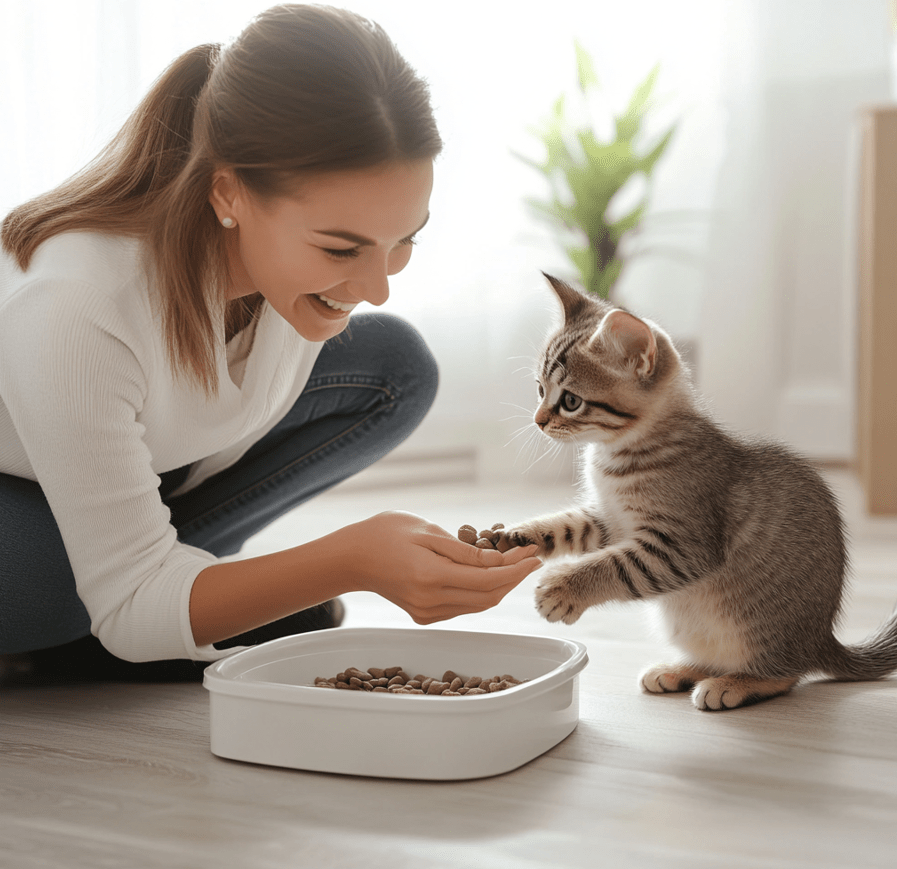
Reward your kitten a small treat when it finishes using the litter box properly. This way they will associate the box with a happy experience. Do not scream at or punish your kitten if they have an accident. Use an enzymatic cleaner to get rid of the smell as you clean up calmly.
6.Keep the Litter Boxes Clean
During training, scoop the litter box after every use to keep your kitten from avoiding it. keep at least 3-4 inches of litter depth for digging. Then, when your kitten is using the box with regularity you can scoop daily. Make sure to clean the box minimum once or twice a week.
By following these steps, you can successfully set up your kitten in the litter box and avoid simple errors.
How to clean a litter box
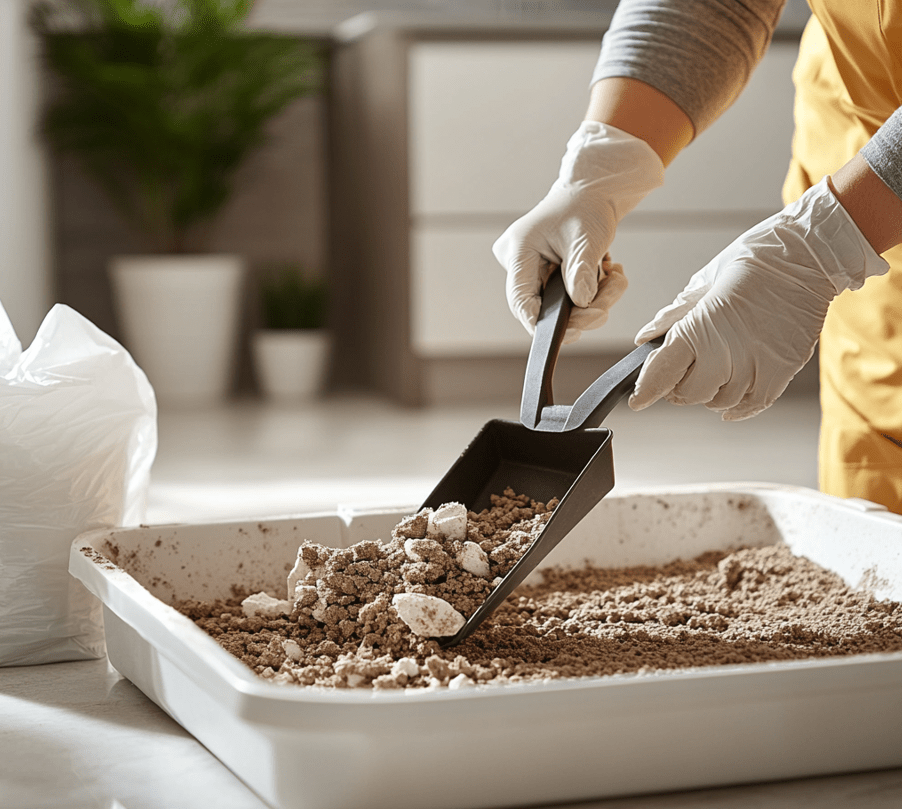
A clean litter box is important for most cats; they prefer a fresh, neat environment. The way to clean will vary by the litter you use. Certain types of litter must be thrown away in its entirety at once when it becomes dirty, while others require regular scooping and eventually a full change.
In terms of cleaning the result in itself, you only require hot soapy water. Strong-smelling cleaners are a poor idea, since kittens have fine noses and those odors can be detected by them. Avoid harsh chemicals and essential oils as well, they are not cat-friendly.
If not, you could buy a self-cleaning-litter-box to help. That being said, if you have a skittish cat who doesn’t like the sounds of cleaning, these might not be ideal.
In my experience, doing a regular clean-up of the cat messes everyday also helps keep your cat happy and home smelling fresh. Also, my cat seems to really like a clean litter box (with no super flowery scents) as he uses one other than his normal ones way more if they’re being scooped.
What to do when the kitten doesn’t want to use the litter box
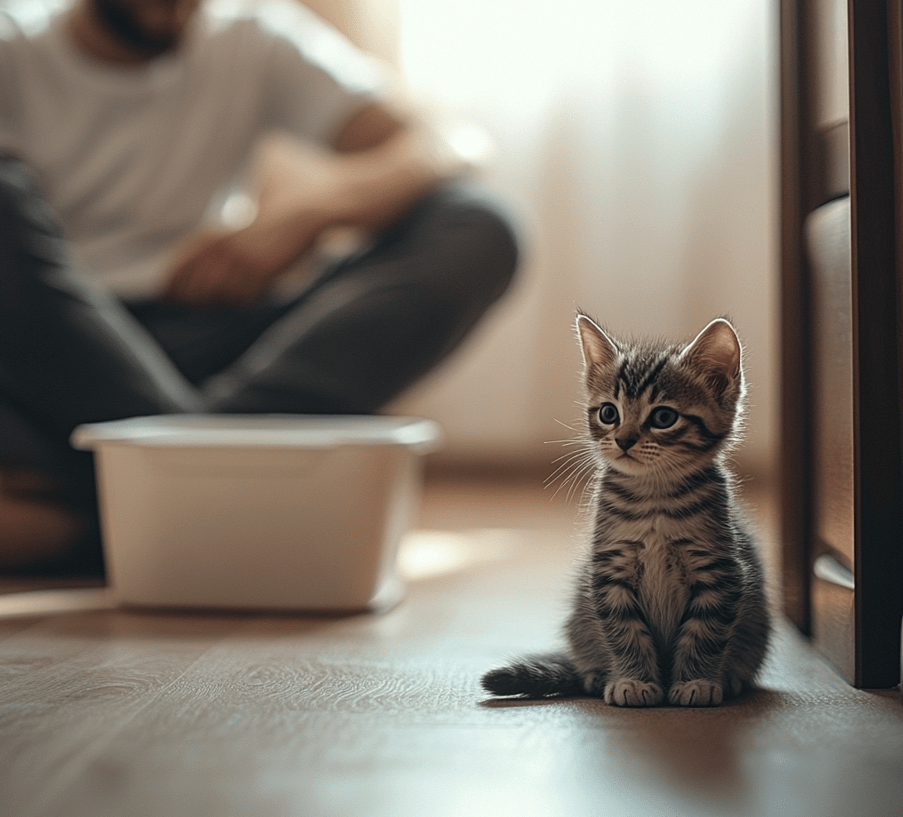
You are not alone if your kitten is having accidents outside of the litter box as he/she gets used to it. This is natural for many new cat mommies and daddies. If you want to know more about how to do it, here are some practical steps:
- Reconsider Your Litter Box Setup: This might sound like a strange one, but kittens can be very particular about their litter boxes. Make sure the litter box is:
-Convenient for them to locate and operate
-Then, put it in a quiet place where they feel safe.
-Not put into a corner, which can feel suffocating.
-In a place where another cat will not be “guarding” it, which would make your kitten wary of using the litter box.
- Different Litter Box or Different Type of Cat Litter: It could be that you just need to find the best option. Other kittens prefer a covered box, others like it uncovered. Others need a box with short sides so they can easily climb in and out. To avoid the problem of your cat not using a covered litter box, but also to maintain cleanliness and keep odors away, you might try changing just the type of litter instead — rather than entirely disposing of an entire heavy container.
- Scoop Regularly: Scoop the litter every day. Change it at week intervals. No kitten doesn’t like to go in a messy box.
- Pheromone Diffusers: Pheromone diffusers can help calm your kitten. You simply plug them in near where the litter box is kept and they emit a calming scent that replicates natural pheromones used by cats for territory marking. This can aid in relieving stress and encourage your kitten to use the litter box.
Most importantly, be patient! Kittens have to learn lots of new habits, so if you keep up with love and consistency then they will pick it up. I had to teach my own kitten the same thing and it felt like a constant struggle but, eventually she got it. Persist; your best fur mate will get it with time.
Finally we can say that- Kittens are easy to litter train since it is their natural instinct to keep away from where they leave the potty. Begin when they reach the age of four weeks and are ready to move around. Kitten experts recommend a small litter box with soft, non-clumping litter that your kitten can easily dig in. Put it in a quiet area so that the kitten feels safe.
Point your kitten to the box, especially after eating or nap time. Reward them with treats each time they use it properly. Scoop daily and clean your litter box weekly with mild soap.
For kittens that stray from the box even if your kitten has an accident, new litter may do just the trick or move their potty pad to a different location. You just have to be patient and gentle, they will eventually learn this.


